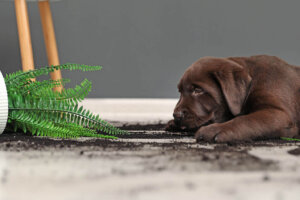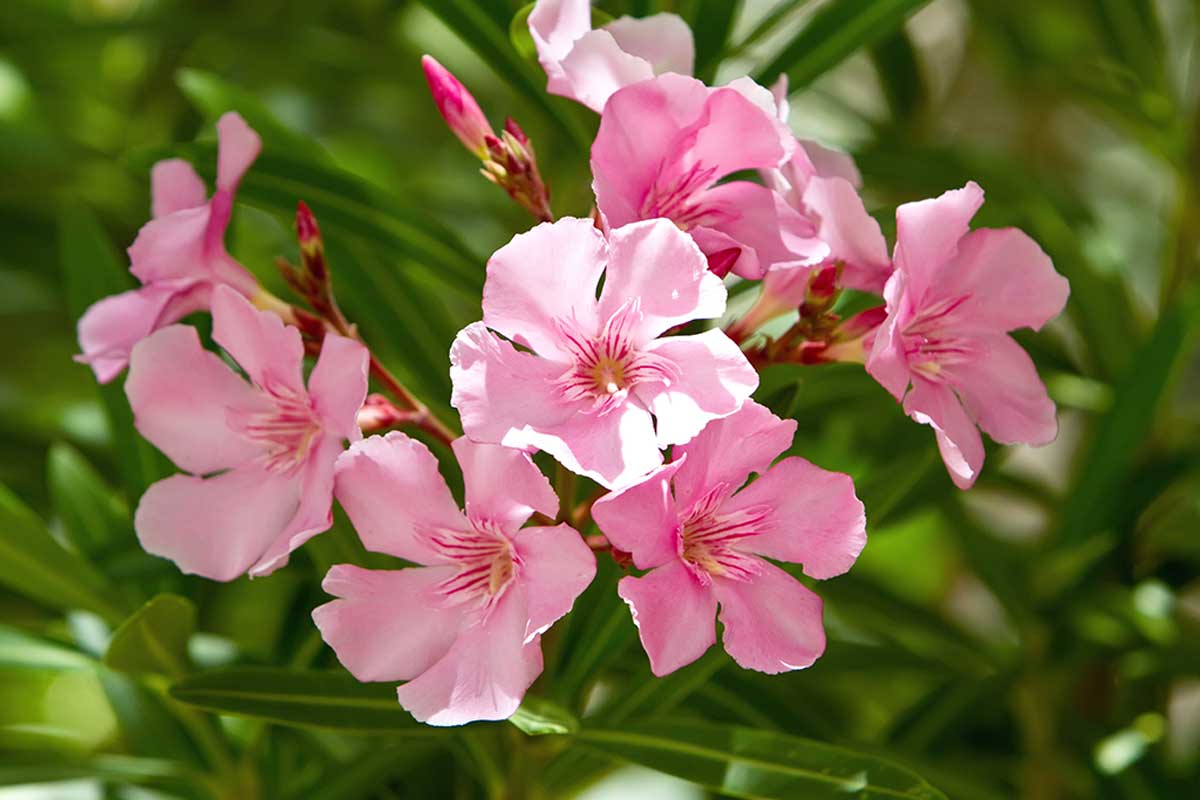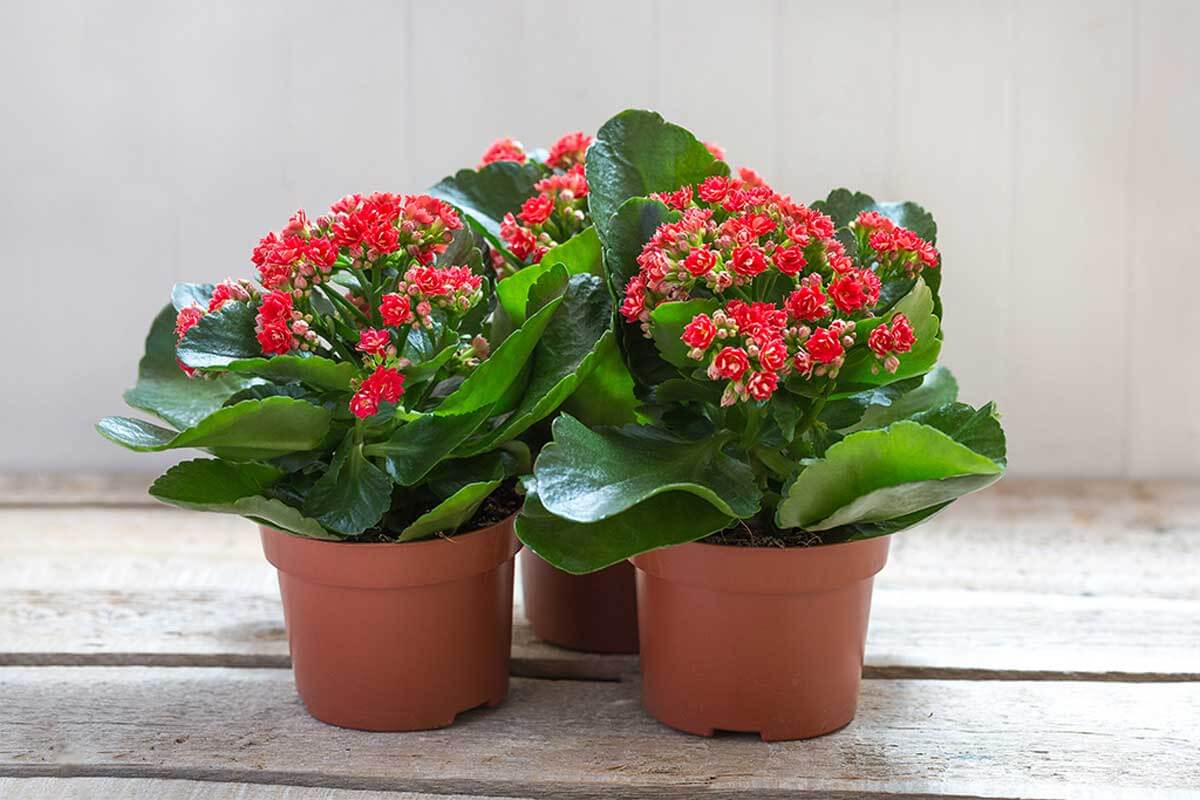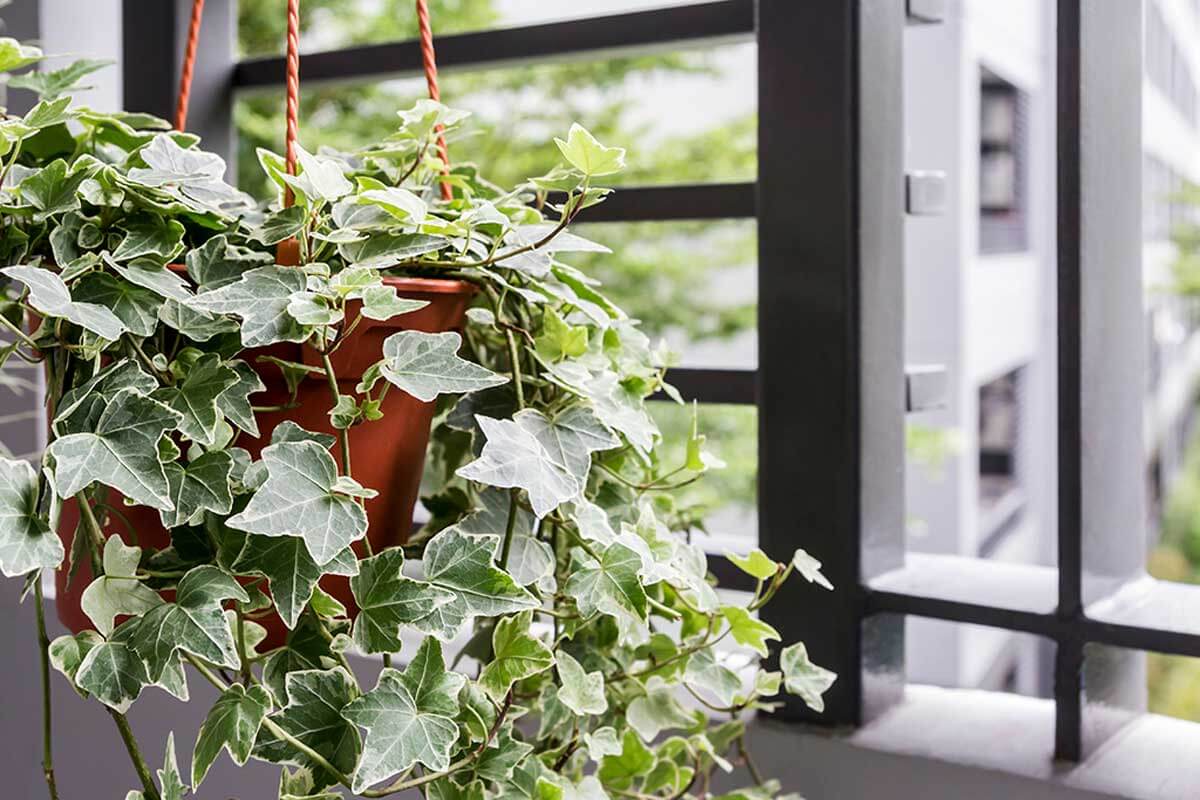Toxic Houseplants For Your Pets

When you have pets, it’s important to consider the indoor plants that you have at home, since there are several types that are toxic. The idea isn’t to go without indoor plants, but to choose the right ones. Thus, if you remove toxic houseplants for your pets, both you and your pet will be happy.
On the other hand, knowing which indoor plants are toxic for pets will allow you to locate them elsewhere. Read on to discover which indoor plants may pose a risk to your pet.
Your pet and the risks associated with toxic indoor plants
Pets can be affected in different ways if they come into contact with toxic plants. Hence the importance of identifying these plants. Some of the most common problems in cats and dogs are allergic and inflammatory responses. These can cause mild or severe skin and coat problems.
Additionally, research points out that some plants affect the gastrointestinal system causing vomiting, diarrhea, and infections. There are also plants that can cause heart problems, seizures, and kidney damage, which can be severe and even fatal.
Toxic houseplants for your pets
Now that you know the risks that your pets can be exposed to if they touch or ingest toxic plants, we’re going to tell you what those plants are. If you identify some of these plants at home, it’s best to keep them away from your dogs or cats. Instead, you can put them on windows or in hanging pots.
Oleander

Oleander is one of the most toxic and dangerous plants for pets. In addition to causing problems at the digestive level, it depresses the central nervous system, generates tachycardia, drowsiness, and arrhythmias. If a pet ingests a high dose of this plant, it can be severe. They could even fall into a coma and die.
Toxic houseplants for your pets: Aloe vera
Aloe vera is a well-known plant and stands out for its multiple health benefits. However, it’s dangerous for pets and causes skin allergies, excessive salivation, vomiting, diarrhea, and abdominal pain. This is due to the aloin it contains (found under the skin of the leaves), which acts as a laxative.
Amaryllis
Amaryllis is a beautiful flower with pink and white tones. The alkaloids that compose it generate vomiting, which causes the pet to become dehydrated. It can cause disorders in the nervous system, causing tremors and weakness.
Azalea
The azalea is a very showy plant with lovely pink flowers. However, they generate a high level of irritability in the digestive system of pets. Among the most common symptoms of touch or ingestion are alterations in the oral mucosa, vomiting, and diarrhea. The most toxic part is its leaves.
Kalanchoe

Kalanchoe is a very striking plant to look at, but it contains toxic assets that shouldn’t be ingested by pets. It usually causes diarrhea and vomiting, and although it’s rare, cardiac arrhythmias can occur.
Toxic houseplants for your pets: Cyclamen
Cyclamen contains active principles and is a highly toxic substance. We can recognize when a dog consumes this plant because the animal looks dazed and presents with seizures, arrhythmia, and, in extreme cases, paralysis in its extremities.
Adam’s rib
The famous Monstera deliciosa or Adam’s rib is a very common house plant. Still, it’s not recommended to have it in homes where there are pets. If dogs or cats consume it, they’ll suffer from inflammation and irritation in the gastrointestinal tract, which causes uncontrollable vomiting.
Croton
Croton is another toxic plant for pets. The main consequences that can be observed when a dog has ingested it are burning of the oral mucosa, abundant salivation, and difficulty in swallowing. Inflammation of the tongue, esophagus, and stomach leads to diarrhea. In fact, this plant also causes contact dermatitis in humans.
Common ivy

Common ivy produces fruits that are appetizing for pets, but which can have serious consequences. If your dog or cat consumes a large amount of them, it can suffer a cardiorespiratory arrest…since this plant reduces heart rate. It also generates dermatitis and ulcers on the skin.
Toxic houseplants for your pets: Hydrangeas
Poisoning from ingesting hydrangeas is rare, but can occur. If your pet consumes it, you should seek urgent veterinary attention. This plant contains a substance called amygdalin that, when eaten, turns into cyanide, being lethal for the pet.
Did you know about these toxic houseplants for your pets?
In this article, we’ve explained the main toxic plants for pets. The idea is that you avoid having them or that you display them far from the reach of your pets. Decorate your home with your favorite plants by all means, but don’t put the health and well-being of your furry friend at risk.
When you have pets, it’s important to consider the indoor plants that you have at home, since there are several types that are toxic. The idea isn’t to go without indoor plants, but to choose the right ones. Thus, if you remove toxic houseplants for your pets, both you and your pet will be happy.
On the other hand, knowing which indoor plants are toxic for pets will allow you to locate them elsewhere. Read on to discover which indoor plants may pose a risk to your pet.
Your pet and the risks associated with toxic indoor plants
Pets can be affected in different ways if they come into contact with toxic plants. Hence the importance of identifying these plants. Some of the most common problems in cats and dogs are allergic and inflammatory responses. These can cause mild or severe skin and coat problems.
Additionally, research points out that some plants affect the gastrointestinal system causing vomiting, diarrhea, and infections. There are also plants that can cause heart problems, seizures, and kidney damage, which can be severe and even fatal.
Toxic houseplants for your pets
Now that you know the risks that your pets can be exposed to if they touch or ingest toxic plants, we’re going to tell you what those plants are. If you identify some of these plants at home, it’s best to keep them away from your dogs or cats. Instead, you can put them on windows or in hanging pots.
Oleander

Oleander is one of the most toxic and dangerous plants for pets. In addition to causing problems at the digestive level, it depresses the central nervous system, generates tachycardia, drowsiness, and arrhythmias. If a pet ingests a high dose of this plant, it can be severe. They could even fall into a coma and die.
Toxic houseplants for your pets: Aloe vera
Aloe vera is a well-known plant and stands out for its multiple health benefits. However, it’s dangerous for pets and causes skin allergies, excessive salivation, vomiting, diarrhea, and abdominal pain. This is due to the aloin it contains (found under the skin of the leaves), which acts as a laxative.
Amaryllis
Amaryllis is a beautiful flower with pink and white tones. The alkaloids that compose it generate vomiting, which causes the pet to become dehydrated. It can cause disorders in the nervous system, causing tremors and weakness.
Azalea
The azalea is a very showy plant with lovely pink flowers. However, they generate a high level of irritability in the digestive system of pets. Among the most common symptoms of touch or ingestion are alterations in the oral mucosa, vomiting, and diarrhea. The most toxic part is its leaves.
Kalanchoe

Kalanchoe is a very striking plant to look at, but it contains toxic assets that shouldn’t be ingested by pets. It usually causes diarrhea and vomiting, and although it’s rare, cardiac arrhythmias can occur.
Toxic houseplants for your pets: Cyclamen
Cyclamen contains active principles and is a highly toxic substance. We can recognize when a dog consumes this plant because the animal looks dazed and presents with seizures, arrhythmia, and, in extreme cases, paralysis in its extremities.
Adam’s rib
The famous Monstera deliciosa or Adam’s rib is a very common house plant. Still, it’s not recommended to have it in homes where there are pets. If dogs or cats consume it, they’ll suffer from inflammation and irritation in the gastrointestinal tract, which causes uncontrollable vomiting.
Croton
Croton is another toxic plant for pets. The main consequences that can be observed when a dog has ingested it are burning of the oral mucosa, abundant salivation, and difficulty in swallowing. Inflammation of the tongue, esophagus, and stomach leads to diarrhea. In fact, this plant also causes contact dermatitis in humans.
Common ivy

Common ivy produces fruits that are appetizing for pets, but which can have serious consequences. If your dog or cat consumes a large amount of them, it can suffer a cardiorespiratory arrest…since this plant reduces heart rate. It also generates dermatitis and ulcers on the skin.
Toxic houseplants for your pets: Hydrangeas
Poisoning from ingesting hydrangeas is rare, but can occur. If your pet consumes it, you should seek urgent veterinary attention. This plant contains a substance called amygdalin that, when eaten, turns into cyanide, being lethal for the pet.
Did you know about these toxic houseplants for your pets?
In this article, we’ve explained the main toxic plants for pets. The idea is that you avoid having them or that you display them far from the reach of your pets. Decorate your home with your favorite plants by all means, but don’t put the health and well-being of your furry friend at risk.
All cited sources were thoroughly reviewed by our team to ensure their quality, reliability, currency, and validity. The bibliography of this article was considered reliable and of academic or scientific accuracy.
- Roder, J. D. (s. f.). Manual de toxicología veterinaria. Red nacional de veterinarias. Recuperado 6 de septiembre de 2021, de http://www.rednacionaldeveterinarias.com.uy/articulos/farmacologia%E2%80%8F/Manual_de_toxicolog_a_veterinaria.pdf







